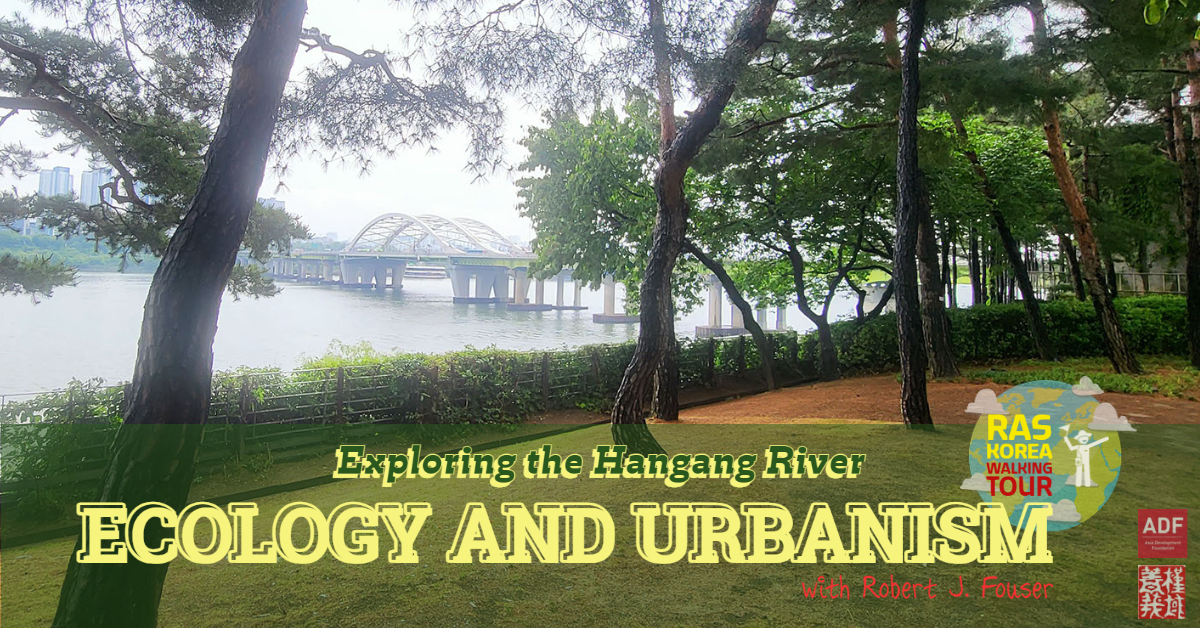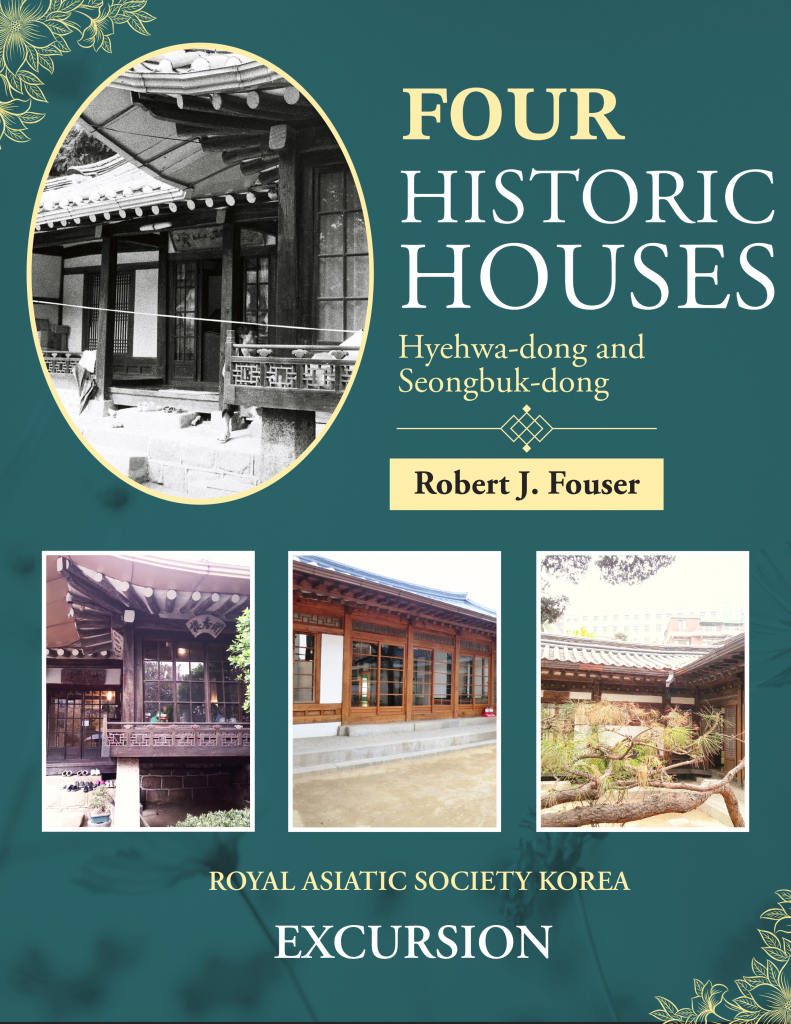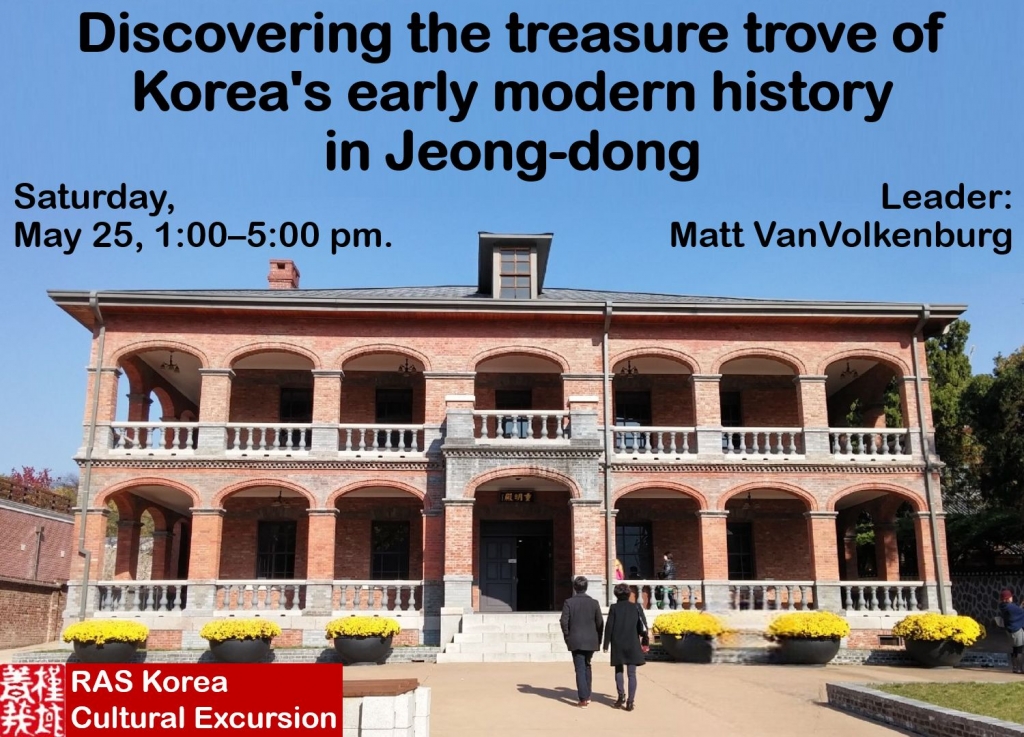

[Cultural Excursion] Exploring the Hangang River: Ecology and Urbanism
June 25, 2023 @ 1:00 pm - 5:00 pm KST
Exploring the Hangang River: Ecology and Urbanism
LEADER: Robert J. Fouser
DATE: Sunday, June 25, 2023. 1:00PM to 5:00PM
DESTINATION: Singil-dong ~ Hapjeong-dong in Seoul
COST: 30,000 won for members; 40,000 won for non-members
MEETING POINT: Meet at the top of Exit 2 of Singil Station (Subway Line 1 & Line 5). At 01:00PM.
REGISTRATION:
RSVP by June 23 (Friday) with payment of the fee via bank transfer. Please register one RSVP at a time.
☞Payment to be remitted to the following account:
SHINHAN BANK ACCOUNT # 100-026-383501 (RAS-KB)
*Reservation is not confirmed until payment has been received by RAS Korea in advance of the event.
The Hangang River is one of the most common geographical features of Seoul. Many residents pass it twice a day to and from work. The river swells with water during the summer rainy season and shrinks during that dryer parts of the year, creating a unique habitat for vegetation and wildlife. The river also has a long history as an important link between the capital, various regions, and the ocean. As Seoul developed, its banks became home to highways aimed at reducing traffic jams in the booming city. It also supplies the city with water.
On this excursion, we explore the various faces of the Hangang River from historical, contemporary, and ecological perspectives. We begin the walk by going over the Saetgang Munhwa Bridge to the Saetgang Ecological Park, one of the first parks in Korea designed to preserve and ecosystem. From there, we will walk through areas of Yeouido with apartments built in the 1970s on our way to the Yeouido Hangang Park, a popular park that spans the entire north side of Yeouido. At the park, we will discuss how its history reflects the history of the river in Seoul. Our next stop will be the Yanghwa Hangang Park sandwiched between the river and the Olympic Expressway completed in 1986 as part of preparations for the 1988 Summer Olympics. From there, we will cross a pedestrian bridge to Seonyudo Island, which was the site of a water filtration facility from 1978 to 2000. In the early 2000s, the facility was repurposed into an ecological park full of diverse vegetation by Cho Sung-yong, a noted architect, and is one of the first examples of repurposing industrial sites in Korea. Next, we will cross the Yanghwa Bridge, part of which opened in 1965, making it the second oldest bridge. On the other side of the bridge, we will make our way to the Jeoldusan Martyrs Shrine built on the site where executions of Korean Catholics were held during the reign of the Heungseon Daewongun in the 1860s. The shrine and cathedral, which were designed by Lee Tae-hee, was opened in 1966 on the hundredth anniversary of the Byeongin Persecution. Our final stop will be the nearby Yanghwajin Foreign Missionary Cemetery, which was designated by King Gojong in 1890 as a cemetery for foreign missionaries where Henry Gerhard Appenzeller, Homer Hulbert, and Horace Grant Underwood are interned. The cemetery includes non-missionary members of the foreign community and was the site of fierce fighting during the Korean War.
We will meet at the top of Exit 2 of Singil Station (Lines 1 and 5) at 1:00 p.m. The excursion will end at Hapjeong Station (Lines 2 and 6) around 5:00, but participants may join me afterwards for a coffee or a meal (not included in the excursion fee). Except for stairs, the walk is flat, but comfortable walking shoes are recommended.
** As our excursion leaders are often too focused on leading to take photos of their own tours, we hope that you will consider sharing with us a few photos from the excursion, or write a sentence or two about your experience that we could use in future promotional efforts on behalf of the society. Any quotes, photos, videos, or other material would be used with attribution.




